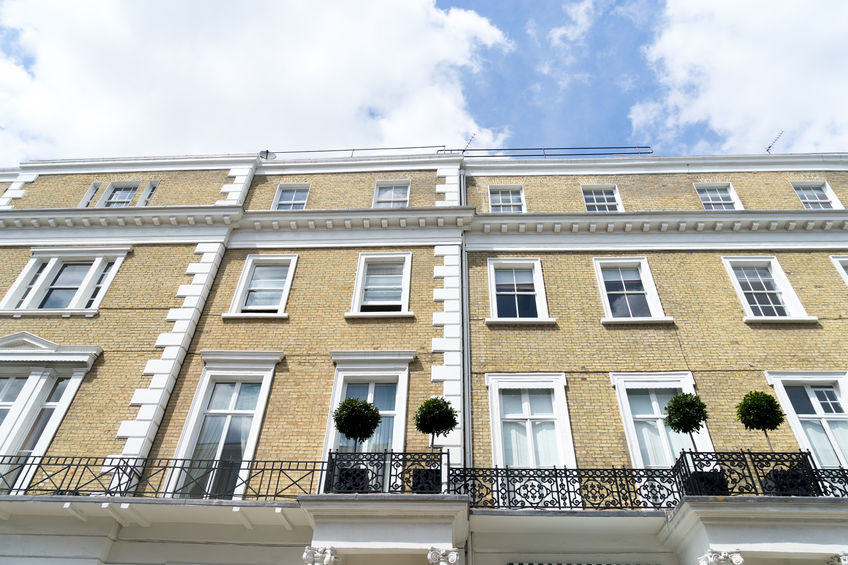All about Lease Extension Valuation – How to get it right first time
by
If you’re buying a flat or apartment it might well be leasehold, where you own the lease of the property but not the actual freehold. The difference? Picture an empty box. As a freeholder you own the whole box, outside and in, but as a leaseholder, you only own the inside of the box, your interior walls.
Leases shorten with time. As the lease gets shorter its value drops. The longer you leave it, the more expensive it is to extend. And it’s generally hard to sell a leasehold property with a short lease because mortgage lenders don’t like lending on short leases…. which is why people extend them.
The cost of extending a lease is called the ‘Lease Extension Value’, and you need a lease extension valuation to extend a lease. If yours has less than 80 years to go, you’ll need to address the matter urgently. Here’s what you need to know.
Informal and formal valuations
A lease can be extended informally for a maximum of 999 years, or formally for an extra 90 years on top of the existing lease term. The calculations used are set down by the Leasehold Reform, Housing and Urban Development Act 1993 Schedule 13. This calculation confirms the amount you will have to pay to your freeholder to add extra years to its term. Most of the time you’ll use the formal statutory lease extension process, adding 90 more years to an existing lease.
I’ve heard about lease extension valuation software – is it any good?
Online lease extension tools are only good for estimating roughly what you might have to pay. They are definitely not suitable when making formal offers to freeholders.
Online calculators are not particularly accurate. They don’t include all the many subtleties and variables that a qualified RICS surveyor will consider. They can’t handle the Reversionary Rate, for example, or the current market value, or any increases in Ground Rent, and all this it matters because mistakes can delay the extension process, even causing problems in the future.
You could face extra costs if you rely on an online tool. If your freeholder gets their own lease extension valuation from a RICS surveyor, you’ll have to pay for it. But if you decide to provide your own lease extension valuation via a RICS surveyor, the leaseholder might not bother to get one of their own since you’ve paid for the right kind of professional help.
If you don’t agree with your freeholder’s valuation, there’s room for negotiation. But it’s vital to have a RICS surveyor on your side because they’re properly qualified to provide opinions and professional insights into lease extension valuations. Software, on the other hand, is not!
When it’s impossible to agree what a lease extension is worth, the First-tier Tribunal is your next stop. It’s important to know that they won’t accept an online lease extension calculation as evidence.
The facts you need to calculate an accurate lease extension premium
These are the facts you’ll need to calculate the cost of extending your lease. As you can see, it makes a lot of sense to get proper professional support.
- The current value of unencumbered interest – The value of the property with a long lease bearing in mind its condition, rather than the current value with a short lease of less than 89 years
- The current Leasehold Value – Which is often a lot less than the unencumbered one since a shorter lease means a property is worthless
- Ground rent, including any future increases – Important since Ground Rent tends to go up over time.
- The number of years you want to extend the lease – Formally this is usually 90 years extra, informally it can be as much as 999 years extra
- The term rate, the Reversionary Rate, and Relativity – All of which are used by RICS surveyors to come to a fair Existing Freehold Valuation
A lease extension valuation is made up of an Existing Freehold Valuation and the ‘Marriage Value’, which goes up as the length of the lease reduces.
The Term is figured out using the years purchased and the depreciation of the ground rent using a Term Rate chosen by your surveyor. That number is added to the Value of Unencumbered Interest, the current purchase price, and the Reversionary Rate is carefully applied over the remaining term of the lease using the Present Value.
Your surveyor will then add together the Term and the Reversion to provide the Existing Freehold Valuation, which gets added to the marriage value. We calculate it by taking away the Existing Leasehold and Freehold Values, then adding a marriage value percentage.
Obviously this isn’t a calculation you want to be handling on your own!
Help with lease extension valuation
If you’re thinking about extending your lease, we’ll make sure it happens as smoothly as possible, all the right boxes are ticked, and you get the best value for money.

 +44 (0)20 3355 7909
+44 (0)20 3355 7909 professional@friendandfalckesurveyors.co.uk
professional@friendandfalckesurveyors.co.uk
